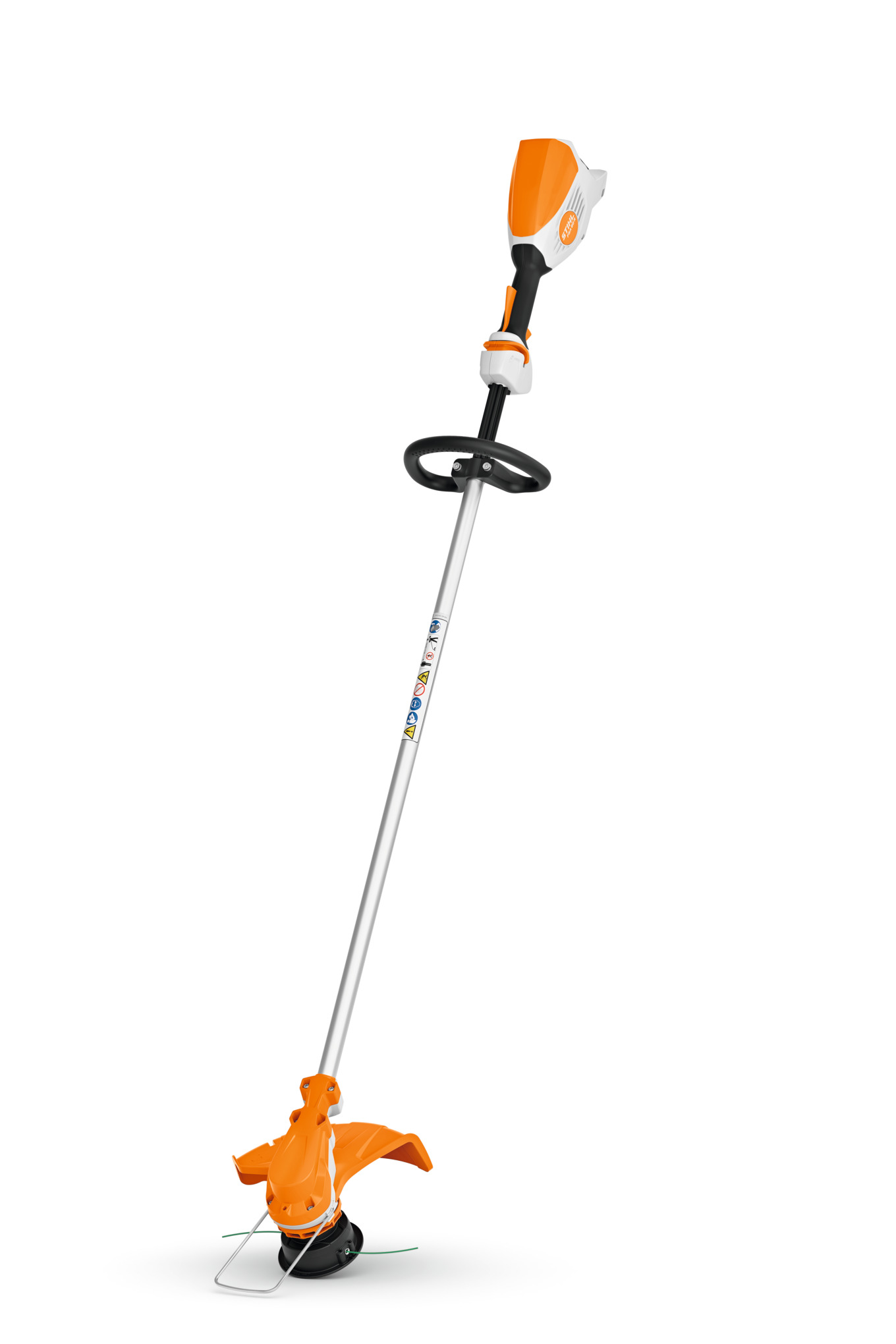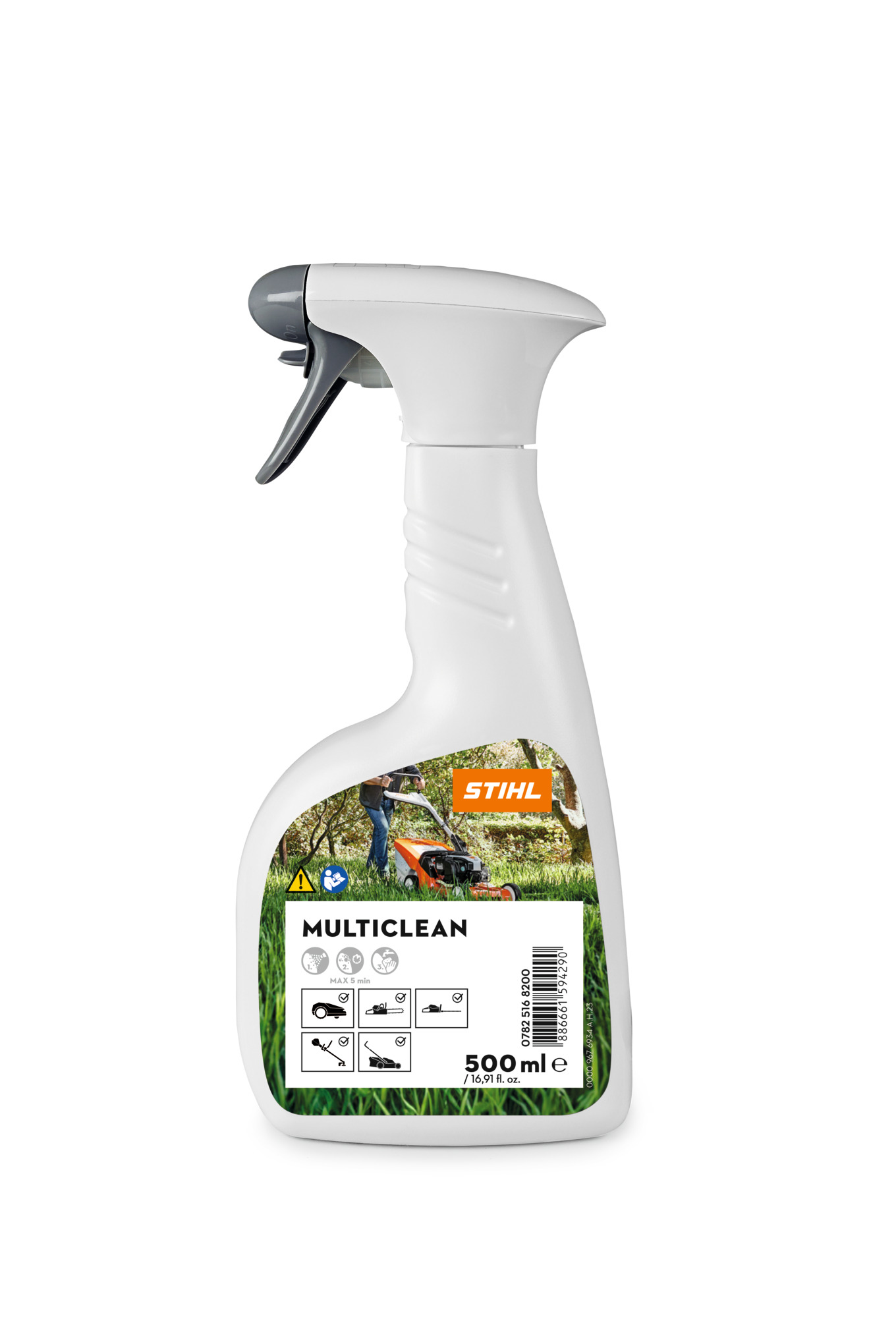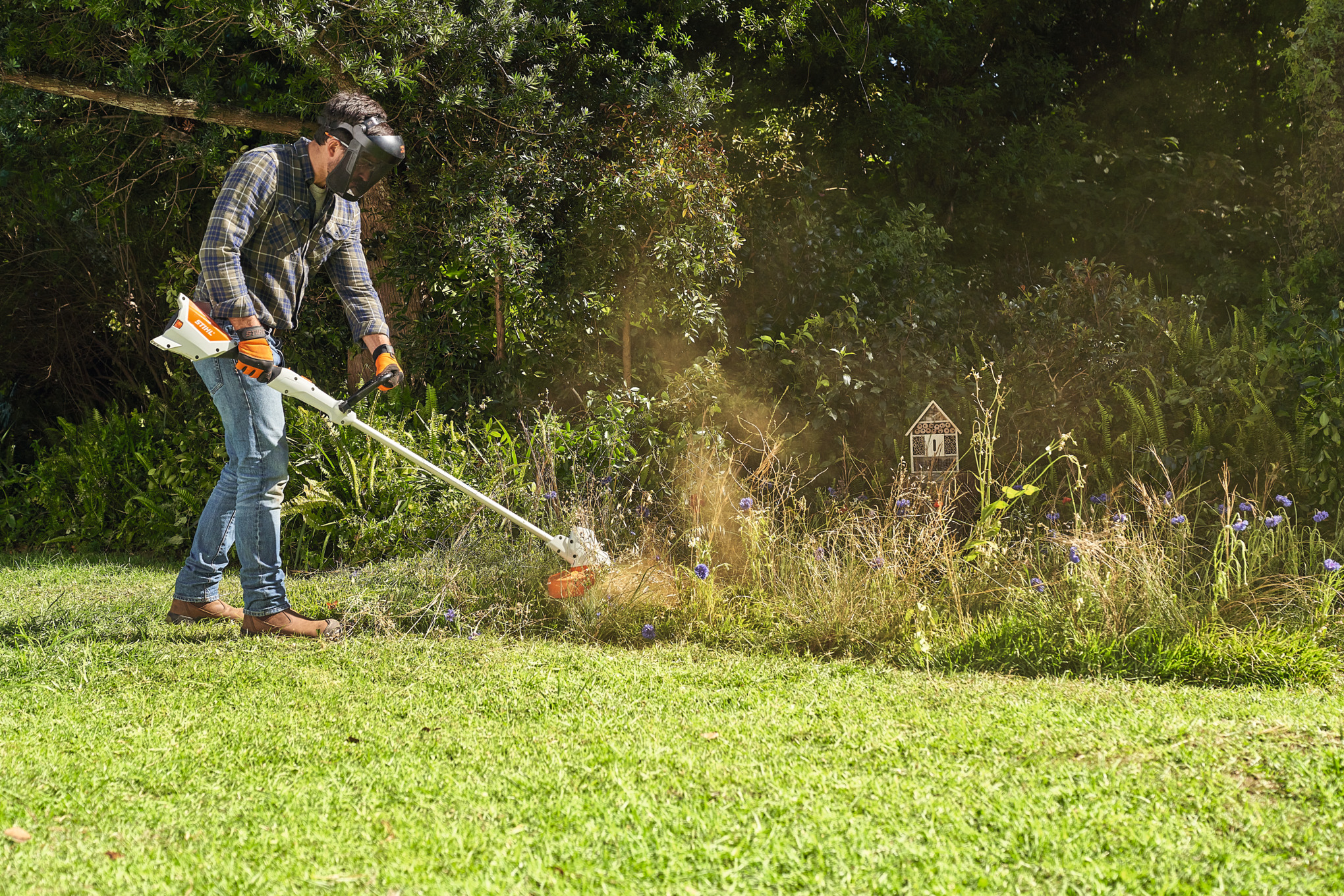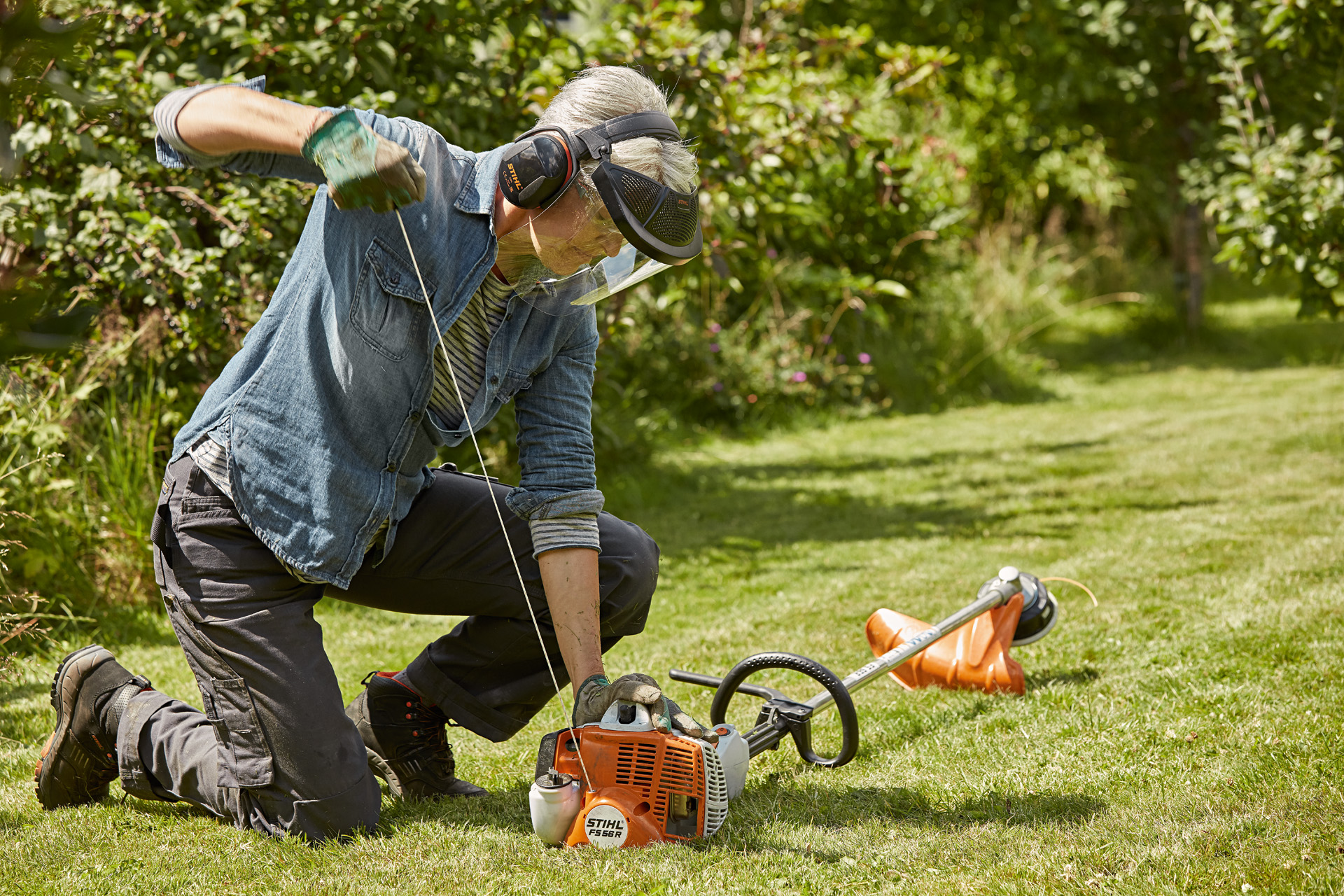Tips for proper brushcutter or grass trimmer storage
Proper storage is a key part of maintenance: find out how to keep your grass trimmer in great condition when it’s not in use.
12.07.2023

Storing petrol-driven brushcutters
Storage preparation: empty the petrol tank
To get your grass trimmer ready to store for an extended period, clean the tool thoroughly and then completely empty the fuel tank. Make sure the carburettor is empty by running the trimmer on idle until the engine shuts down.
Storage preparation: clean cutting attachment and guard
Remove dried grass and dirt from the guard using a stiff brush. Clean the cutting attachment, and if a metal cutting attachment is used apply Multispray.
Correct storage position
Storing grass trimmers for long periods on the ground could cause the polymer guard to bend under the weight of the machine. Store the machine securely with no weight on the guard or cutting attachment to prevent damage.
User manuals for STIHL grass trimmers
Download the user manuals for your STIHL grass trimmer here at your convenience.
Storing cordless brushcutters

Removing and storing the battery
Switch off the machine and remove the battery. Store the battery partly charged, to the level of two LEDs in green, and at a temperature between -10 and 50°C. Avoid direct sunlight and moisture. Further information on the right storage temperature for your power tool can be found in the operating instructions. Store the battery separately from the brushcutter and charger.

Storing the charger
Disconnect the mains plug of the charger from the socket, and where applicable remove the battery. Secure the connection cable on the charger and store it in a dry place, at a temperature between 5 and 40°C. Further information on the right storage temperature for your power tool can be found in the operating instructions.
Storing electric brushcutters
Cleaning brushcutters
Disconnect the mains plug and secure the cable on the brushcutter. Thoroughly clean the power tool, paying particular attention to the air intake slots.
General storage tips
Whether battery-powered, petrol-driven or electric, the correct storage methods for the spool of mowing line, metal tool and the brushcutter itself are always the same.
Store brushcutter mowing lines in water
Mowing lines need moisture to stay flexible. To ensure that your mowing line is ready for use immediately after winter, remove the spool from the mowing head and store the whole thing in water. The line can remain there until it is used again. You can change the water occasionally if you wish, but it is not generally necessary to do so. Alternatively, if your mowing line has been stored dry, you can put it in water for 1-2 days before use to restore suppleness and flexibility.
STIHL PolyCut blades should be treated in exactly the same way.

Checking the metal brushcutter tool
Remove and clean the metal tool. Check it for damage and apply corrosion protection. Your specialist dealer will be happy to sharpen these on your behalf.

Brushcutter storage: hung up is best
It’s best to store your brushcutter hanging up. To save space, you can pivot the steering handle inward.
Summary: grass trimmer storage
- Always read the operating instructions carefully.
- For petrol-driven brushcutters, completely empty the tank before storage.
- Cordless brushcutters: remove the battery and store it separately. Remove the charger from the power supply and store it separately.
- Electric brushcutters: disconnect the cable from the socket and clean the power tool thoroughly.
- Store grass trimmer mowing line in water
- Ideally, hang the grass trimmer up for safe, space-efficient storage








